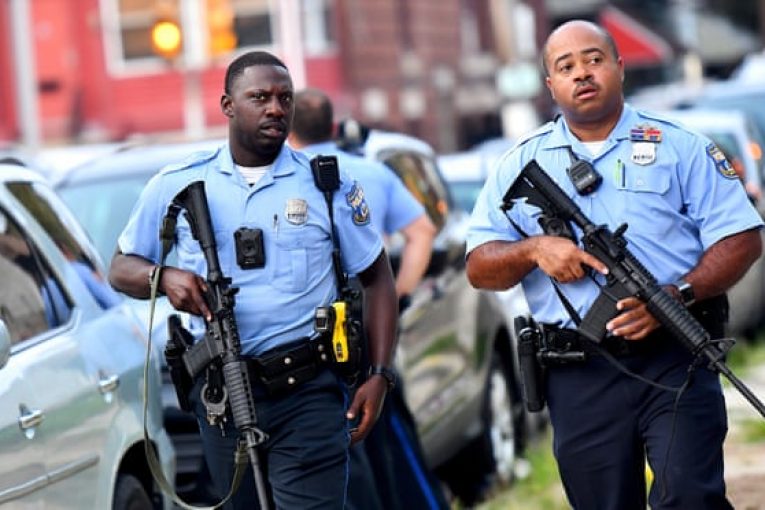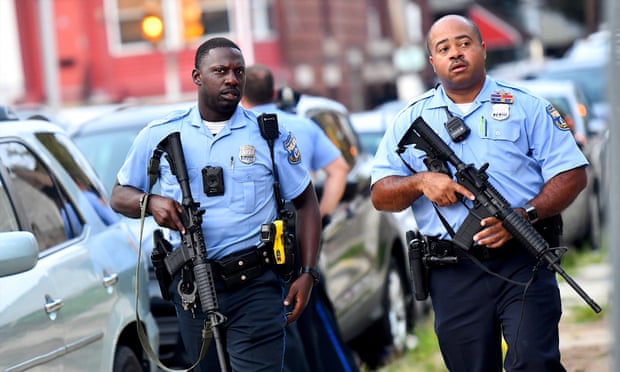

By Rory Fleming
Since the killing of George Floyd, a glass ceiling on mainstream police reform discourse has shattered. One of the newly popular debates is whether police officers should continue to enforce traffic violations, or whether that duty should be passed on to unarmed alternative responders. Encapsulating the pro side of the argument, University of Arkansas law professor Jordan Blair Woods told The Appeal that police traffic stops are “one of the most common ways we see policing situations unfold into disturbing and scary consequences for over-policed communities.”
In terms of political action, movement to disarm traffic enforcement has been markedly slower. The Berkeley City Council passed the first proposal to do so last year, but California state law currently preempts local authorities from making this change.
Not so in Pennsylvania. After experiencing racial discrimination as a Black motorist, Philadelphia City Councilmember Isaiah Thomas introduced a measure to get police out of (some) traffic enforcement last October. And on October 14, the measure passed with a 14-2 vote. Councilmember Thomas told NPR affiliate WHYY that “I’m confident that this bill will be able to address some of the equality issues that we’ve faced in the city of Philadelphia. I think it will put us in a position where hopefully we’ll see significantly less stops as it relates to these types of traffic violations.”
This is a decision bound to make conservatives, police groups and some criminal justice thinkers livid, even though the prohibition on stops is only limited to “secondary violations” like driving with a broken taillight or without an inspection sticker; police can still stop people for speeding, ignoring stop signs, and the like. However, the criticism of David Oh, one of the council members who voted no,  was limited to speculating whether the state legislature would preempt the measure.
was limited to speculating whether the state legislature would preempt the measure.
The fact that low-level traffic stops are disproportionately made against Black motorists, often as a pretext to look for guns or drugs, is both well-known and problematic. So what is the policy argument for keeping armed police on low-level traffic stops?
If one can stomach it, go to the Manhattan Institute. The conservative think tank is known for giving Heather Mac Donald, who popularized the concept of a “war on cops,” a platform. A month before the Philadelphia City Council passed its new measure, the Institute published an issue brief explaining “why police need to enforce traffic laws.” In fact, the brief is written by John Hall, who serves as a Deputy Inspector of the NYPD’s Office of Crime Control Strategies — in other words, a literal cop.
In his brief, Hall argues that cops should remain on traffic enforcement for three reasons. First, roads will be safer. Second, automatic enforcement via traffic cameras can’t account for ways people try to get around enforcement, such as license plate blockers. Lastly, and most important, there is an alleged “overlap of traffic violators and more serious offenders.”
The persuasiveness of the first and the second reasons are really a matter of how the reader feels about the security-versus-freedom tradeoff that is always at issue when talking about criminal justice. In a maximally safe world, there would be no speeding, no texting and driving, and no failing to yield to pedestrians. But there would also be no young adult drivers, let alone teen drivers, and yet we still let them on the road so they can get jobs and support themselves. Slightly more traffic collisions and significantly more racial equality in society is an arrangement most people who care about racial equality will accept.
But the third reason is really what requires unpacking.
Hall points to the fact that motorists “used force against 481 officers during stops,” in 2020, but does not specify whether he means in New York City only or what percentage of these incidents involved an actual physical injury. Even if the statistic addressed New York alone, the reality is that the NYPD issues around 750,000 tickets annually in a normal year. Divide 481 by 750,000 and you get a number that is rapidly approaching zero.
Then he moves onto guns, which is not surprising. Anti-violence rhetoric from the police and the political class in big liberal cities like New York is obsessed with guns — if we just get the guns off the street, they charge, then violence will no longer be a problem. It is a pipe dream that increases incarceration without having much effect on violence rates.
The inconvenient truth for Hall is that this is not the case. Perhaps the most successful violence interruption strategy to date is still Operation Ceasefire, rated “Effective” by the National Institute of Justice’s CrimeSolutions portal. (As law enforcement veteran Leonard A. Sipes, Jr. notes, “Few programs evaluated by Crime Solutions.Gov are rated as ‘effective.’ Most are rated as ‘promising,’ or ‘no effects.’”). Ceasefire is not about mass arrests to blindly confiscate as many illegal guns as possible, but police and other governmental agencies strategically negotiating with gang members to get them to stop killing each other. In contrast, Project Exile, the most punitive gun policing and prosecution strategy on the market, is ranked “Promising” based on a single study.
When Hall argues that there will be less illegal guns retrieved if armed officers are taken off of traffic enforcement, he is absolutely correct. But so what? Guns don’t kill people; people do. Guns just make it easier. The data also bears that out.
In his last-ditch effort to make it sound like traffic enforcement is really stopping serious crimes, Hall pulls out some idiosyncratic information from his jurisdiction. Apparently, more people are using cars to commit shootings lately. But Hall is comparing double-digit increases in raw numbers (not percent) from September to November 2019 to the same period in 2020. While this is upsetting, he makes no attempt to say this is a nationwide problem, nor does he try to diagnose the problem or determine whether it is here to stay. For all we know, this data is indicative of nothing.
Just like non-police alternative responders in other contexts, there are inevitably going to be some situations that an unarmed responder is ill-equipped to handle during a traffic stop. The vast majority of traffic stops are safe, but on an extremely rare occasion, one may encounter someone armed and dangerous. An unarmed responder would need to call for police support in that case. But no rational person looks at data from CAHOOTS, the famous community responder program in Eugene, Oregon, and says that since police back-up are called one percent of the time, it means that the whole program should be dismantled.
In general, opponents of these sorts of programs mainly seem aggrieved that police may end up with less political influence and power.
Rory Fleming is a freelance writer and licensed attorney.
